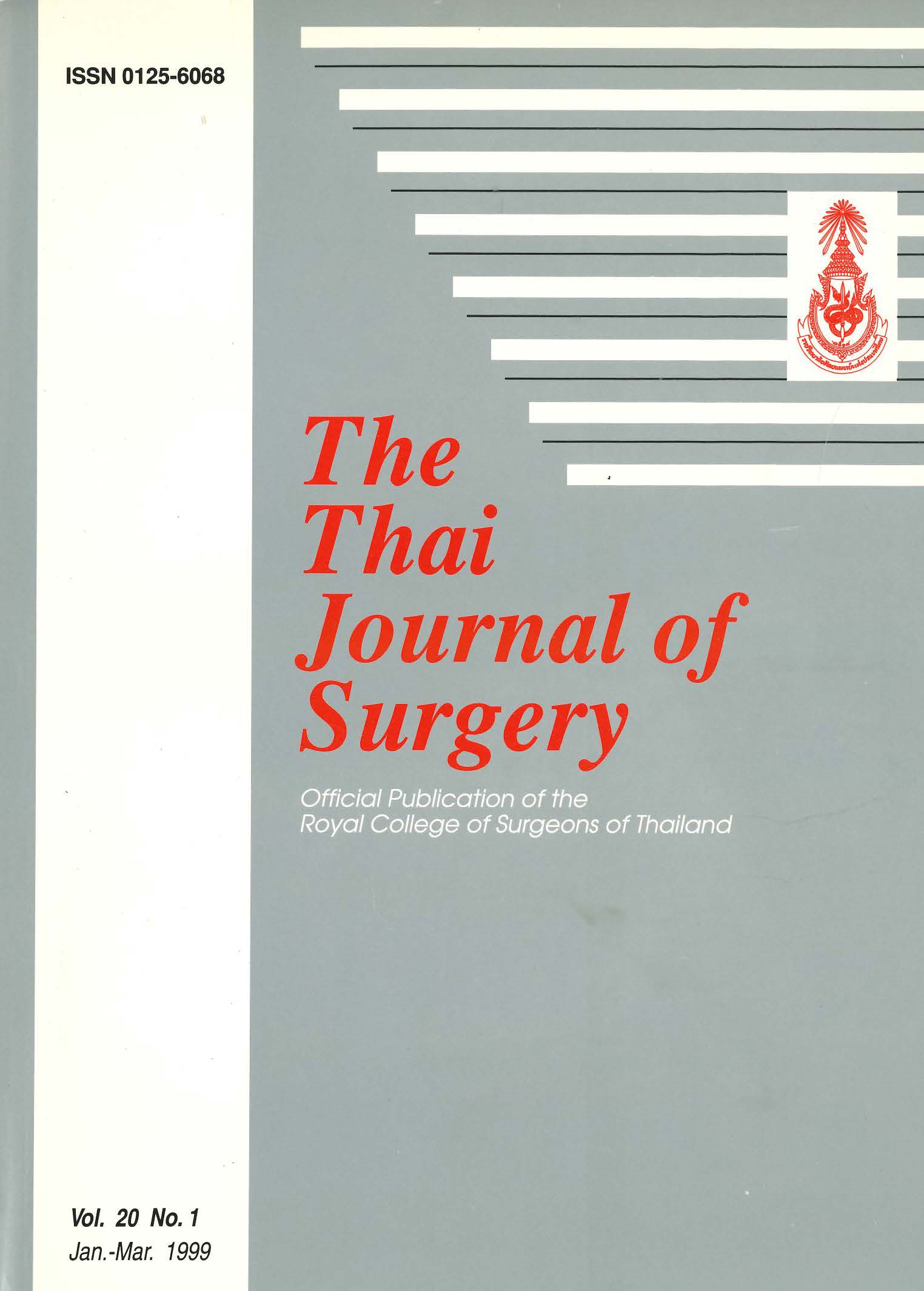Outcome Analysis of Renal Transplantation from Living Related Elderly Donor
Abstract
A retrospective analysis of our living related renal transplant program (from May 1988 to August 1998) revealed 8 of donors were above 50 years of age (range 50-60 year). One recipient died at one and a half year after renal transplantation. Seven recipients have been followed up for more than 3 year. These patients were cohort of 12 patients (recipients of grafts from donor age 40-49 year) with similar HILA match, immunosuppressive protocol and follow-up period more than one year. Graft survival at one year was 100 per cent in all recipients. Allograft function was evaluated by serum creatinine determination. Serum creatinine levels (mg%) were 2.47 ± 1.98, 2.37 ± 0.82 and 2.15 ± 0.21 recipients from in donor age below 50 and 1.58 ± 0.32, 2.48 ± 1.65 and 2.00 ± 0.17 in recipients from donors of age above 50 years old at 1, 3 and 5 years, respectively. There were no added morbidity in older donors in comparison to younger donor. In view of acute organ shortage, it can be concluded that if elderly donors are properly screened, they can be accepted for donation without increasing risks to donor or graft outcome.
References
2. Rowe JW, Andres R, Tobin JD, et al. The effect of age on creatinine clearance in men: a cross-sectional and longitudinal. Gerontol 1976; 31:155.
3. Ljungqvist A, Lagergreu C, Normal intrarenal arterial pattern adult and aging human kidneys. J Anat 1962; 96:285.
4. Kaplan C, Pasternack B, Shan H, Gallo G. Age related incidence of sclerotic glomeruli in the normal human kidneys. Am J Path 1975; 80:227.
5. Anderson S, Brenner BM. Effects of aging on the renal glomerulus. Am J Med 1986; 80:435.
6. Hostetter TH, Rennke HG, Brenner BM. Compensatory renal hemodynamic injury. A final common pathway of residual nephron destruction. Am J Kidney Dis 1982: 1:310.
7. Marx GF, Marteo CV, Orkin L. Computer analysis of post anesthetic death. Anesthesiology 1983; 59:54.
8. Sakellariou G, Danilidis M, Alexopoulos E, et al. Does the donor age influence graft survival in renal transplantation? Transplant Proc 1987: 19:2071.
9. Kostakis AJ, Kyriakidis ST, Garbis S, et al. The fate of renal transplants from elderly living related donors. Transplant Proc 1990; 22(4):1432.
10. Sumrani N, Delacny V, Ding Z, et al. Renal transplantation from elderly living donor. Transplantation 1991 ; 51:305.
11. Darmady FM. Transplantation and aging kidney. Lancet 1974; 2:1046.
12. Korb S, Pustay M, Kolovich S. Renal transplantation of organ from donor over 50 years of age. Transplant Proc 1989;21:1940.
13. RoaKV, kasiske BL, Odlund MD. Influence of cadaver donor age on post-transplant renal function and graft outcome. Transplantation 1990; 49:91.
Downloads
Published
How to Cite
Issue
Section
License
Articles must be contributed solely to The Thai Journal of Surgery and when published become the property of the Royal College of Surgeons of Thailand. The Royal College of Surgeons of Thailand reserves copyright on all published materials and such materials may not be reproduced in any form without the written permission.



